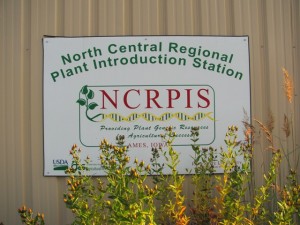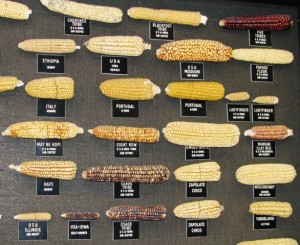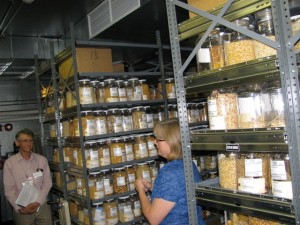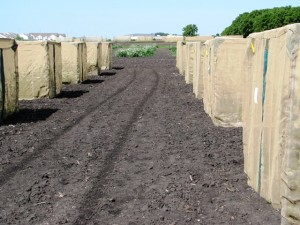- USDA screens bee genes, does not find smoking gun.
- Organic industry needs to focus on “wider benefits to avoid losing customers to other ethical issues”. Er … right.
- M.S. Swaminathan talks to the Wall Street Journal. With added video goodness.
- UK newspaper discovers the threatened home of the wild apple.
- Sustainable farming is the way forward for Africa. Course it is.
- Blight resistant potatoes. No, really. They are.
- The Barefoot Beekeeper.
- ICRAF identifies a silver-bullet tree to revive African soils.
Nibbles: Gardening, Maple syrup, Farming and conservation, Late blight, Urban guerrilla, Bizarre produce, Russian food, Aquaculture, Heirloom apples, Turkish medicinal plants, Bee-eating hornets
- NY Botanical Garden launches summer Edible Garden celebration.
- Thingy for getting more syrup out of maples invented.
- Farmer floods his fields on purpose.
- Insights into tomato late-blight resistance. Do try and keep up!
- A very English guerrilla gardener.
- Pictures of weird fruits and vegetables.
- Russian starters. Uhm, I spot a trend.
- The future of aquaculture: giant robotic roaming cages.
- Saving California’s Sebastopol Gravenstein apple.
- “Zeytinburnu Medicinal Plant Garden, opened in 2005, is Turkey’s first and only medicinal plant garden.”
- Something else has it in for bees: Chinese hornets.
Nibbles: Seed travels, Carotenoids in cucumbers, Tea and hibiscus, Sea level rise, Tewolde on climate change, SPGRC
- After a year’s travel in search of seeds, Adam Forbes turns in his report.
- The genetics of orange-fleshed cucumbers elucidated.
- Tea and hibiscus booze.
- Video of honey harvesting.
- Maps of sea level rise. All somewhat unsatisfying, somehow.
- “Because we are poor, we shall suffer first but, ultimately, we shall all die together.”
- SADC Plant Genetic Resources Centre (SPGRC) director Paul Munyenyembe does the public awareness thing.
Thank you, Ames!
Just back from Heartland and, before the jetlag overpowers me, I really want to thank everyone at the North Central Regional Plant Introduction Station (NC7) in Ames, Iowa for their incredible hospitality over the past week. I know this will get to them because a couple of the people working at the station told me they visit us occasionally. Grateful for that too!

The ARS facility at Ames is the oldest of the US plant introduction stations. It’s main crop is maize, of which it has a collection of about 20,000 accessions from all over the world.

But there are also some 30,000 accessions of a bunch of other crops and wild species.

Many of the crops require careful management of pollinators during regeneration and multiplication. Fortunately, there hasn’t been any colony collapse disorder among the beehives used and maintained on the station.

Like many of the active genebanks of the USDA National Plant Germplasm System, the one at Ames benefits from an almost symbiotic relationship with nearby Iowa State University, with some staff also having university duties and many students gaining hands-on experience in the genebank.

Also nearby is a fascinating prairie remnant, Doolittle Prairie, which houses about a dozen crop wild relatives. I’ll say a bit more about that in due course, but here’s what the place looks like at sunset.

Thanks again to everyone at NC7!
Nibbles: Urban bees, Borlaug, Cotton, Income, Mammals, Human disease, Caribou, Chestnut, IRRI
- There are 227 bee species in New York City. Damn! But not enough known about the work they (and other pollinators) do in natural ecosystems, alas.
- Borlaug home to be National Historic Site?
- Archaeobotanist tackles Old World cotton.
- FAO suggests ways that small farmers can earn more. Various agrobiodiversity options.
- About 400 new mammal species discovered since 1993 (not 2005 as in the NY Times piece). Almost a 10% increase. Incredible. Who knew.
- But how many of them will give you nasty diseases?
- The caribou wont, I don’t think. And by the way, its recent decline is cyclical, so chill.
- Saving the American chestnut through sex. Via the new NWFP Digest.
- “The best thing IRRI can do for rice is to close down and give the seeds it has collected back to the farmers.” Yikes, easy, tiger! Via.